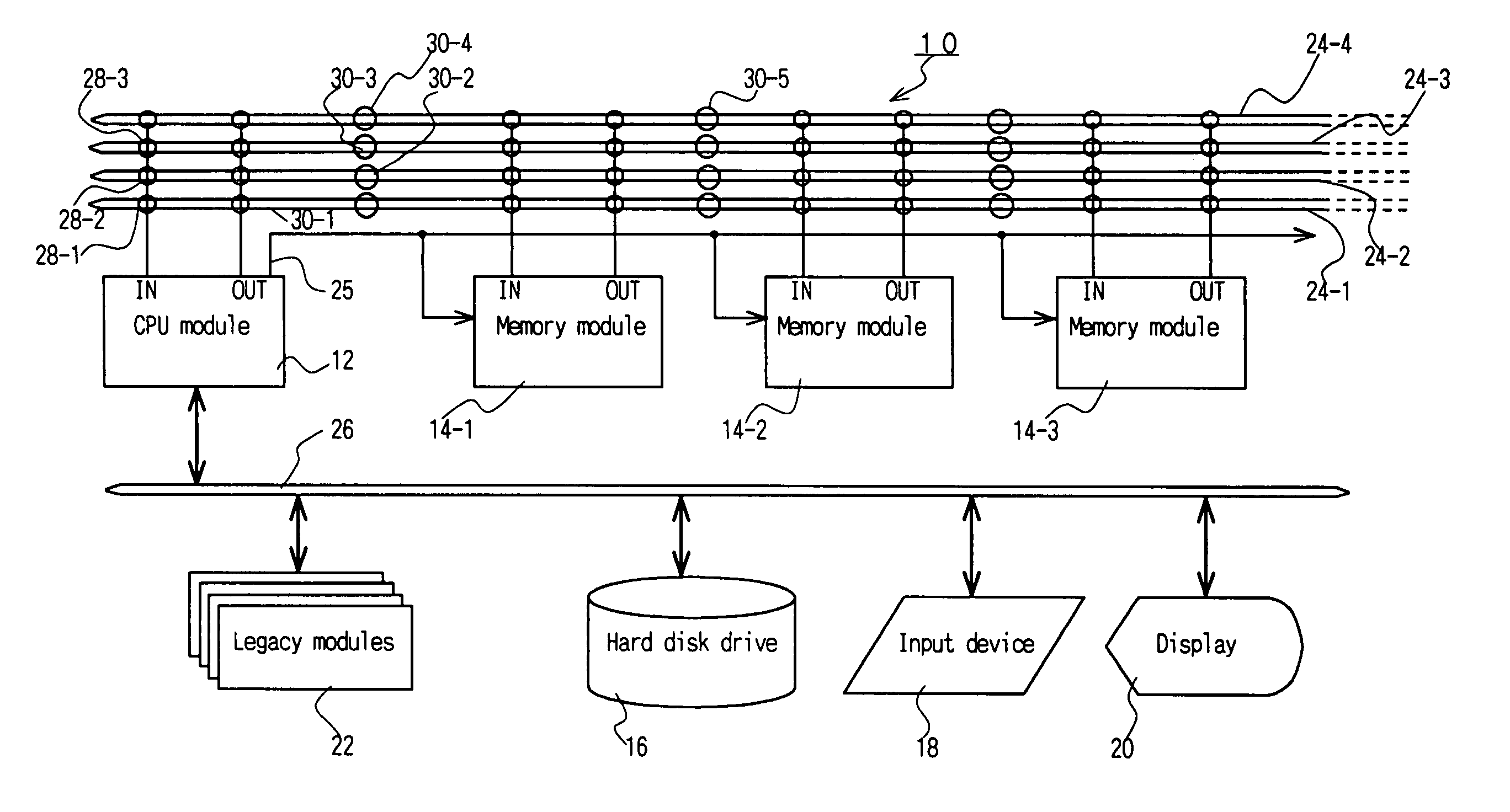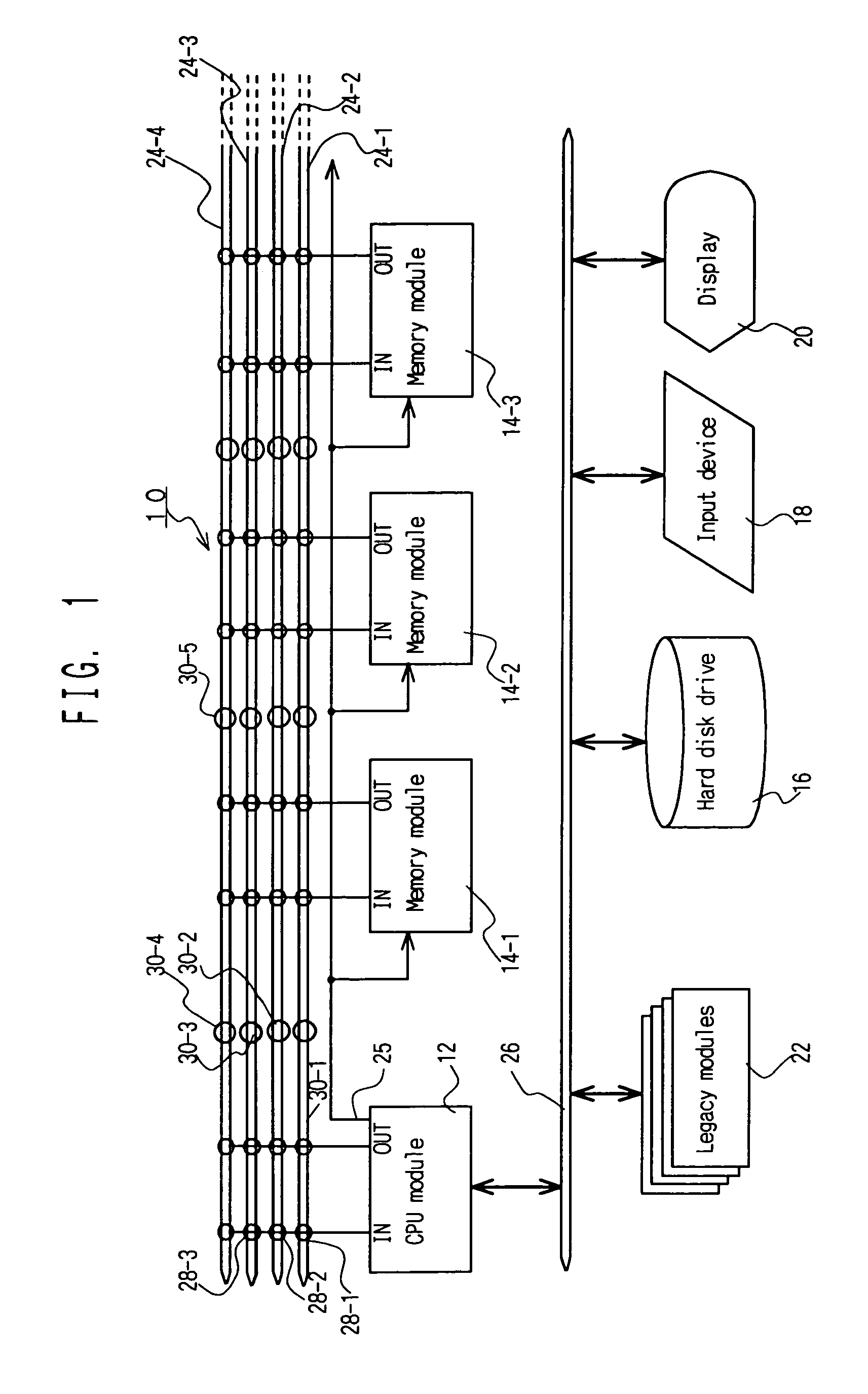Architecture of a parallel computer and an information processing unit using the same
- Summary
- Abstract
- Description
- Claims
- Application Information
AI Technical Summary
Benefits of technology
Problems solved by technology
Method used
Image
Examples
Embodiment Construction
[Hardware Configuration]
[0062]Here follows a description of the embodiments of the present invention made with reference to the appended drawings. FIG. 1 is a block diagram showing the configuration of a computer system according to an embodiment of the present invention. As shown in FIG. 1, a computer system 10 comprises a CPU module 12 that performs parallel operations based on a single instruction, memory modules 14-1, 14-2 and 14-3 that store various types of data required for parallel operations, a hard disk drive 16 that stores required programs and data, a keyboard, mouse or other input device 18, display 20 consisting of a CRT or the like and legacy memory 22 that stores data and the like in various formats. In addition, on buses 24-1, 24-2 . . . , switches 28-1, 28-2, 28-3, . . . and the like are placed at points of contact with the various memory modules 14, so the selected circuit elements are able to exchange information. In addition, switches 30-1, 30-2, . . . are provi...
PUM
 Login to View More
Login to View More Abstract
Description
Claims
Application Information
 Login to View More
Login to View More - R&D
- Intellectual Property
- Life Sciences
- Materials
- Tech Scout
- Unparalleled Data Quality
- Higher Quality Content
- 60% Fewer Hallucinations
Browse by: Latest US Patents, China's latest patents, Technical Efficacy Thesaurus, Application Domain, Technology Topic, Popular Technical Reports.
© 2025 PatSnap. All rights reserved.Legal|Privacy policy|Modern Slavery Act Transparency Statement|Sitemap|About US| Contact US: help@patsnap.com



